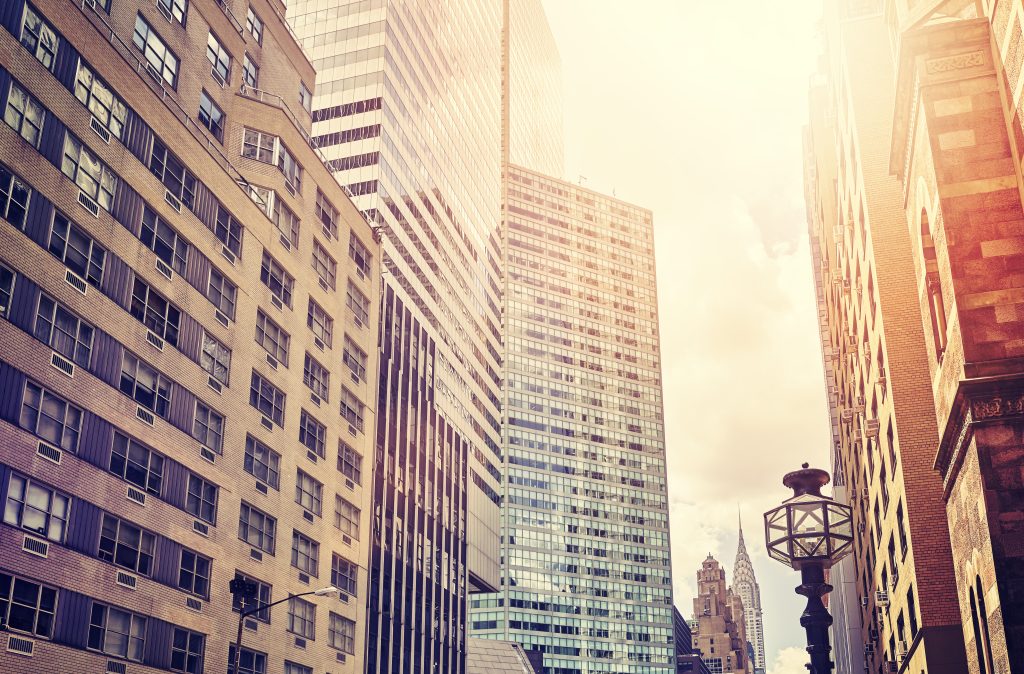By Chuin Ting Weber, CFP, CFA, CAIA
CEO & CIO, MoneyOwl
16 years ago, I was a global banks credit analyst watching a succession of big-name dominoes fall. Back in September 2008, Lehman’s default and Merrill Lynch’s running into Bank of America’s arms for rescue took place on a Sunday night, US time.
A week after, also on a Sunday night, Goldman Sachs and Morgan Stanley were named bank holding companies, allowing them access to the Federal Reserve’s liquidity window. Just as important was the signal of this action of the Fed’s support for these two investment banks.
There were more rescues to come in the following months, by both the Treasury and the Fed. The Treasury had an eye-watering US$700 billion Troubled Asset Relief Program (TARP). It actually failed in Congress in the first attempt, but eventually passed. The TARP program’s net cost has been estimated by to be US$31.1b as of September 2023, a fraction of the original package. That’s a key principle of stanching banking crises. A show of force and determination, to restore confidence.
On the Fed’s part, there was a whole host of other “alphabet soup” initiatives that the Fed rolled out.
What was the underlying cause of this banking crisis?
It started with US banks and other mortgage lenders (many now out of business, like Countrywide) that would lend money to people who couldn’t really afford houses to buy them. These were called “sub-prime” mortgages, because the creditworthiness of the borrowers was poor.
These mortgages were packaged into “mortgage-backed securities” (MBS – think of it as a fund with 100 mortgages, and the whole fund is traded as a bond). These MBSes were then sold on to investors, like insurance companies and pension funds. The investors then got the return from the mortgages. Banks could offload them from the balance sheet and free up capital, on which backing they lend even more or do trading to make more money.
By themselves, MBSes are not destructive. But clever financial engineering packaged these MBSes into structures called Collaterised Debt Obligations (CDOs). Pieces of these CDOs were then tagged with different risk and return, based on the priority of loss-taking: with those who took first losses getting the highest return, and those who would suffer losses only after others have absorbed some, take lower return.
Some of these pieces that had a cushion below them were rated “AAA” (think Temasek Holdings) or “AA” (think DBS bank) by reputable rating agencies, paid for by the issuers .
The CDOs were sometimes put into further CDO structures, creating financial weapons of mass destruction called CDO-squareds.
Insurance companies, pension funds around the world, and private bankers sold these products to their clients. Including in Singapore.
It seems anecdotally that people did not understand what they were selling – the credit rating seemed good enough to give them assurance. Because interest rates had been low for a long time, end investors were also happy to chase after a higher yield, even if they did not understand what they were buying.
The house of cards came tumbling down when the US started to increase interest rates and people started to default on the sub-prime mortgages. While the lending banks offloaded the main mortgages, they held the CDOs as investments. The investment banks, like Lehman, Morgan Stanley etc., and hedge funds, had these on their balance sheet. The banks also had exposures to the Lehmans, and hedge funds.
People lost capital, pensions and homes. With the banking crisis came a deep recession, and people lost jobs and businesses.
For investors in the public markets, the US stock market did not bottom out until 9 March 2009, but recover it did. S&P500 bottomed out at 666. 16 years on, on Lehman’s default anniversary, it was over 5500.
March 2020: COVID Turmoil
Fast forward to another Sunday night, 14 March 2020.
The world was reeling from the COVID fallout. Markets had a 12% drawdown over a few days in February 2020.
MoneyOwl had a direct investing service then. It was a scary time for the clients. At this first plunge, I had a client note titled: 12% down? “Sale” time not “Sell time”. (You can still find it on our website https://www.dev.moneyowl.com.sg/articles/markets-down-12-sale-time-not-sell-time/.) Our messages thereafter were consistent – deploy dry powder if you can (i.e., invest more), or at least, keep to your plan and stay invested, don’t panic.
The Fed took action to cut rates from 1% to 0% and announced $700 billion of Quantitative Easing (buying of bonds).
Markets did not seem to be convinced. There was another 12% percentage plunge in the S&P500 in one day.
As if to demonstrate its prowess, almost immediately after, the Fed announced yet another $500 billion in unscheduled overnight repurchase agreements to flood the bond markets with more liquidity.
As we know, the US Government followed up with fiscal stimulus on top of the Fed action.
The recovery in the stock market and subsequent knock-on impact on inflation, is history.
For MoneyOwl, it wasn’t a brave guess that turned out right. It’s also not because we had superior insight. Rather, we could give that comfort and advice because of an appreciation of how the crisis playbook goes and more importantly, how the stock markets work in the long run.
March 2023: Credit Suisse
On Sunday night 19 March 2023, I got out of bed at midnight, after returning from overseas, to write a note to clients because of the ongoing talks over the takeover of the once-mighty Swiss banking giant Credit Suisse (CS) by its UBS, force-brokered by the Swiss government.
CS had its fair share of governance lapses and high-profile losses, but the CS situation was also triggered by sentiments after the collapse of mid-sized US banks earlier this month.
Amidst the fears of a second global financial crisis in just as many decades, what I conveyed to clients was that the GFC was recent enough for regulators to do what they had to prevent another, and that they had the ability and innovation to do it. (The Business Times carried the piece https://www.businesstimes.com.sg/wealth/wealth-investing/banking-turmoil-stay-invested-too-shall-pass)
In 2023, we saw losses being imposed on CS bondholders and an expansion of deposit insurance to cover non-retail deposits in the US regional banks. Right or wrong, we do not have a second GFC.
The wisdom of all days
This trip down memory lane is one I have taken every September since Lehman, because it reminds me of what is needed when it comes to the world of investing and finance, and why it is important.
The first reminder is about the dangers of chasing yield without knowing the underlying credit risk.
Bonds and lookalikes appeal to the psyche of many of us, because they look and feel safe: almost like a fixed deposit but with higher yield.
We chase yields when interest rates are low. That’s what the CDO investors did.
Bottom line is that you need to understand what you are really buying. There is no free lunch when it comes to investment return.
For example, in the world of investment-linked policies (ILPs), the policy illustration shows your return if you get 4% return and 8% return. Please know that these are not your returns. It depends on your underlying investments: there is no way a bond fund can return you 8% p.a. consistently over 20 years. Pay attention also to the high cost you are playing per year for this structure that eats into returns.
Today, in 2024, we don’t have CDOs anymore. But now that the US Fed has started to cut interest rates, I worry that this blind chase for yield will re-start. I expect that there will be much more creative product development in the next few months and selling of products structured to “help you” beat falling interest rates.
If it sounds too good to be true, it probably is. Walk away and take a proper look later. If you don’t understand it, walk away too.
The second reminder is about the nature of stock market investing.
No matter how bad the crisis, the stock market recovers, and we should not market time but look to reap long-term rewards.
Post Lehman, from 31 Dec 2008 to 30 Aug 2024, the MSCI All Country World Index has gone up more than 266% (8.45% p.a. annualised), and the S&P500 more than 519% (12.07% annualised).
When one is in thick of the crisis, we would not know when the turnaround would happen. You need to ride it out. Anyone who claims to be able to call the direction, the path or the bottom or the period to the bottom is saying he is smarter, faster and better than the rest. And maybe he is, but remember that on average, most active fund managers get it wrong across all time frames when they try to market time.
Every crisis is different, in that it may wipe out some companies or business models. But many will survive, and new ones will emerge and thrive. Consumers, industry and markets will adapt. As it has through world wars, genocides, depressions, oil crises, terrorism, banking crises and yes, epidemics, so the human spirit will rise to the occasion, once again, as before, and with it, the markets.
As long as you are invested in the broad, globally diversified markets at low cost, the only real harm that the volatility can do to you is when you panic and sell and turn a temporary paper decline into a permanent loss.
The ancient Persian adage, that “this, too, will pass” applies aptly to long-term investors.
What’s needed is to focus on what matters in your real life, stay employed in your day job as much as it depends on you, tighten your belt and stay invested. Give the market time to do whatever it will and work itself out.
The third reminder I give myself is about how the financial industry needs to work differently.
The financial system, especially the banking system, is core to the workings of our everyday life. Money is the lifeblood of economic activity. The reason why these things happen on Sundays is because they need to be sorted out before bank branches, online services, money movements and capital markets open on Monday morning.
Throughout these crises, we see that when the financial industry is unfettered, to be solely operated on increasing revenue and profitability, the costs of collapse are significant.
Privatising gains and socialising losses have become a mark of shame on the financial industry these past two decades. It is no wonder that trust in financial institutions in the industry is not high.
We can do better.
As both corporate financial institutions and individual professionals, we need to rediscover our purpose as finance professionals.
The banking crises have shown us that no matter how profitable a company can be, and no matter how much of a “brand name – this, too, can pass. As individuals, our time is even shorter, and maximising our earnings and wealth may not be the wisest thing to do.
Yet the power of money is what keeps economies going, businesses and communities thriving, and people living better and better lives. This is impact that can go on, long after the material show and glory have passed.
I suspect that the satisfaction of making a difference through work, would surpass that of a purely making money for its own sake.
That’s what the MoneyOwl Team and I are betting on, and I hope more industry partners will come alongside us in time to come.
Subscribe here for our soon-to-come and free monthly OwlHoots on financial planning insights and analysis.




